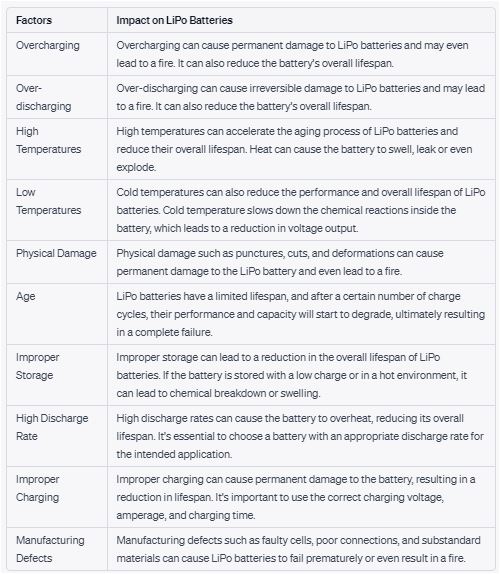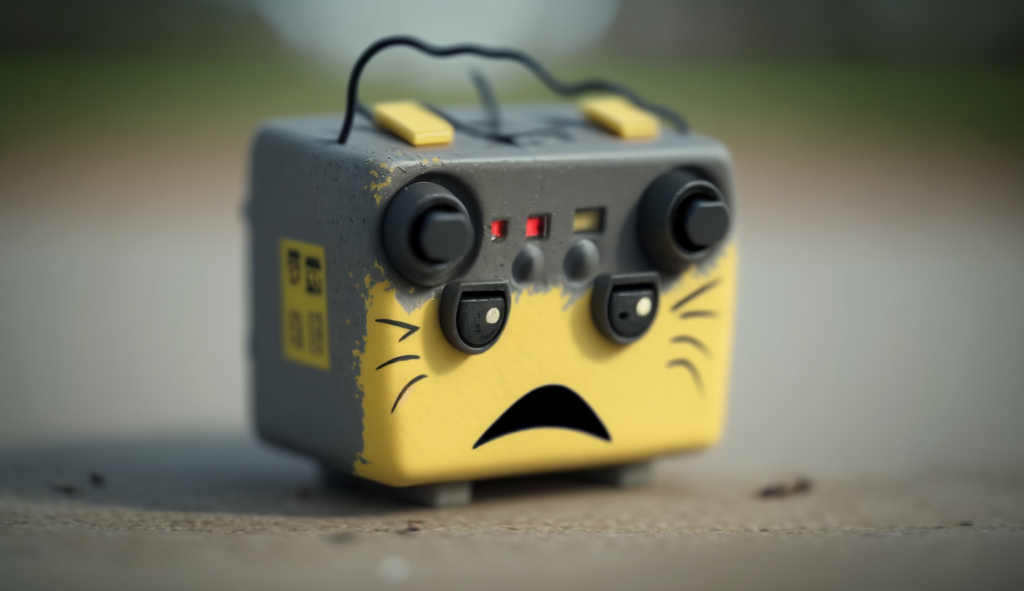The Harmful Effects of Discharging FPV Drone LiPo Batteries Below 3.5 to 3.6V Per Cell

Introduction:
Lithium Polymer (LiPo) batteries are commonly used to power First Person View (FPV) drones due to their high energy density, lightweight, and ability to deliver high discharge rates. However, discharging these batteries below a certain voltage threshold can cause irreversible damage, reducing performance and compromising safety. This technical note discusses the harmful effects of discharging an FPV drone LiPo battery below 3.5 to 3.6V per cell, using a 1300mAh 6S LiPo battery with a 100C rating as an example. So, if you have a 6S, the battery should not go below 6*3.5 = 21V.

Reduced Battery Lifespan:
Discharging a LiPo battery below the recommended voltage threshold can cause irreversible chemical changes within the cell, leading to a reduced overall lifespan. As the battery is depleted below 3.5 to 3.6V per cell, the internal resistance increases, causing excessive heat generation during charging and discharging cycles. This heat accelerates the breakdown of the battery’s internal components, resulting in diminished capacity and shorter service life.

Puffed Cells:
When a LiPo battery is discharged below the safe voltage threshold, the internal chemistry can become unstable, leading to the formation of gas inside the cells. This gas buildup causes the cells to swell, or “puff,” which can result in a physical deformation of the battery. Puffed cells have an increased risk of failure, including short-circuiting and thermal runaway, which could lead to a fire or explosion.

Reduced Performance:
As the voltage of a LiPo battery drops below 3.5 to 3.6V per cell, its ability to deliver the required current decreases. This can result in a significant reduction in performance, as the drone may not receive sufficient power to maintain stable flight. In extreme cases, the drone may experience a sudden loss of power, leading to a crash or loss of control.

CHECK OUT OUR VTX COLLECTION:
https://thefpvproject.com/product-category/transmitter-and-receiver/elrs-tx-rx/
What is a Video Transmitter?
https://www.easytechjunkie.com/what-is-a-video-transmitter.htm
VTX stands for video transmitter, this is the heart of the FPV life system. Pumping life into the many possibilities of FPV. VTXs come in many different shapes, sizes, strengths, and wiring setups. Strapped to the front of the quad is an FPV camera, and strapped to the head is a pair of FPV goggles. You can watch live, instantaneous footage right from the cockpit because the VTX is sending the footage received from the camera out to the goggles.
You are picking the right VTX for you. This will start with knowing if size and weight are factors for you. If you are planning to race, and only race, then you will select any VTX that is light in weight. It’s probably important that your VTX can do pit mode and channel control (depending on which one you choose). This may be a smart audio feature or the tramp protocol. Pit mode is where you will be able to set your VTX to a certain mode that allows you to power up your quad without powering up your VTX to keep you from blasting video and trampling over other racers on the track. Channel control allows you to change your frequency right from your radio for easy switching at a race, or to prepare your quads for the race the next day. Seeing that range is not so much of a factor in a race, only 25mw is allowed, and all that you need. So you can pretty much pick any when it comes to figuring out which is best for you and your power output needs.

